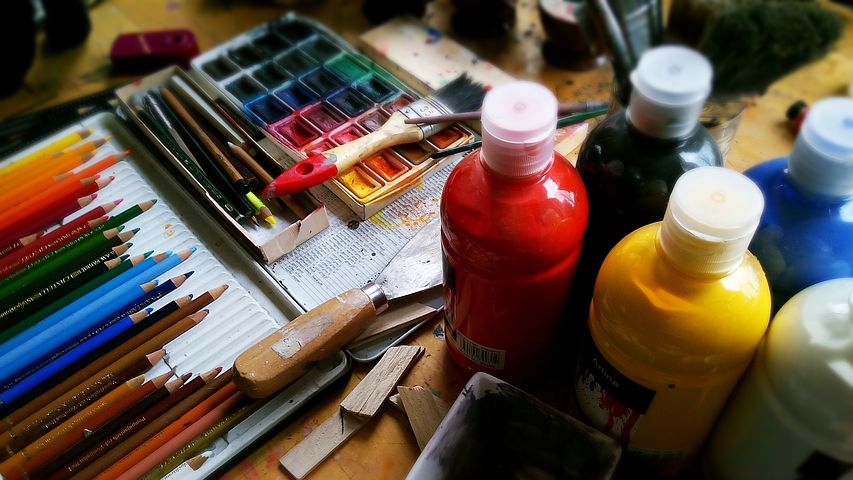EPISODE SUMMARY:
In season 3 episode 3 of the Eudo Podcast, we turn from the question of beauty to the question of art. What is art? What is the connection between beauty and art? And how does art reveal worldviews and the longings of the human heart? These questions and more will be discussed in this episode.
EPISODE NOTES:
What is Art?
There are two basic kinds of answers to this question, what we might call traditional and conventional answers.
- Traditional answers to the question seek some property or set of properties all works of art possess, and these properties typically fall into one of three categories:
- Representational Properties (so works of art represent or mimic or imitate reality),
- Expressive Properties (so works of art express the thoughts or feelings or worldview of the artist), or
- Formal Properties (such as integrity, wholeness, symmetry, beauty, etc.).
- Conventional answers to the question typically define art as either that which is created by an artist and presented to the art-world or as that which stands in the art-historical relation to some set of earlier art works.
The problem with both traditional and conventional answers to the “what is art?” question is that they seem to leave things out that should be included and then tend to include things that should be left out.
Let’s see if we can build up to an answer to the question, what is art? by considering some claims of artists and theologians of art:
First, consider Jeremy Begbie, the Duke Divinity School theologian and artist, and his definition of art from his book Redeeming Transcendence: Before anything else, the arts are practices or activities, socially and culturally embedded, and that these practices are of two basic kinds: constructive and receptive:
- The arts involve making—interacting with the elements and processes of the physical world so as to bring something into being that did not exist before in that form.
- The arts involve receiving—we hear music, gaze at an image, get caught up in a drama, etc.
Next, consider what Makoto Fujimura, an artist and the founder of the International Arts Movement (IAM), a nonprofit that encourages artists to wrestle with questions of art, faith and humanity through workshops, lectures and performances said about the arts as follows: “The arts are a cup that will carry the water of life to the thirsty. It’s not the water itself; it’s the vessel.”
Finally, consider N. T. Wright from his book Simply Christian. He says the following about art. As an “expression of human delight and wisdom,” art and the “arts are not the pretty but irrelevant bits around the borders of reality. They are highways into the centre of a reality which cannot be glimpsed, let alone grasped, any other way. . . . [Art] is like a chalice: again, beautiful to look at, pleasing to hold, but waiting to be filled with the wine which, itself full of sacramental possibilities gives it its fullest meaning.”
Taking the insights of Begbie, Fujimura, and Wright into account, I define art as follows:
My definition of art:
Art is an artefact or performance that (i) conveys meaning and (ii) either (a) possesses one or more aesthetic properties (e.g., beauty, ugliness, etc.) or (b) belongs to a past or existing art form.
Art and the Bible
Does God care about art? Should Christian’s care about art? Is art even a biblical concept?
First, it is important to note that God himself is an artist. Consider Genesis 1. What we find there is God the creator brings into being out of nothing a world that is full of diversity, order, beauty, and abundance. In other words, God is the master artist.
Second, we find in God’s command to Moses to build the tabernacle in Exodus 31, God’s validation of art and artists. God calls Bezalel by name—an artist—to build the tabernacle. And he directs the artists to build the tabernacle and its furnishings according to a specific pattern. So, we find in Exodus 31 God commissioning artists to create art, and when we examine the context, we find that the tabernacle is to be adorned with art and beauty to remind the Israelites of the Garden of Eden (that is, home) and to sustain them in their wandering in the dessert
Does God care about art and artists? The answer, Biblically, is a resounding yes! And so, by implication, if God cares and affirms and loves and creates art, so should we, as his followers.
CONCLUDING REMARKS:
Since art is a kind of language—conveying meaning that is often inexpressible in words alone—it is true that we can learn a lot about the culture from the art its artists produce. We can learn about the deep longings of the human heart and theimaginative stories that animate us through the art a culture produces and consumes. With this connection between art and worldview in mind, we can add the following questions as diagnostics to help us better understand culture:
- Is this artwork true to the way the world is? (a question about truth and representing reality)
- Is this artwork true to the way the world out to be? (a question about longing and the hearts deep desires)
RESOURCES MENTIONED:
- Jeremy Begbie, Redeeming Transcendence
- Nancy Pearcey, Saving Leonardo
- Hans Rookmaaker, Modern Art and the Death of Culture
- Francis A. Schaeffer, Art and the Bible
- ______, How then Shall We Live?
- N.T. Wright, Simply Christian





